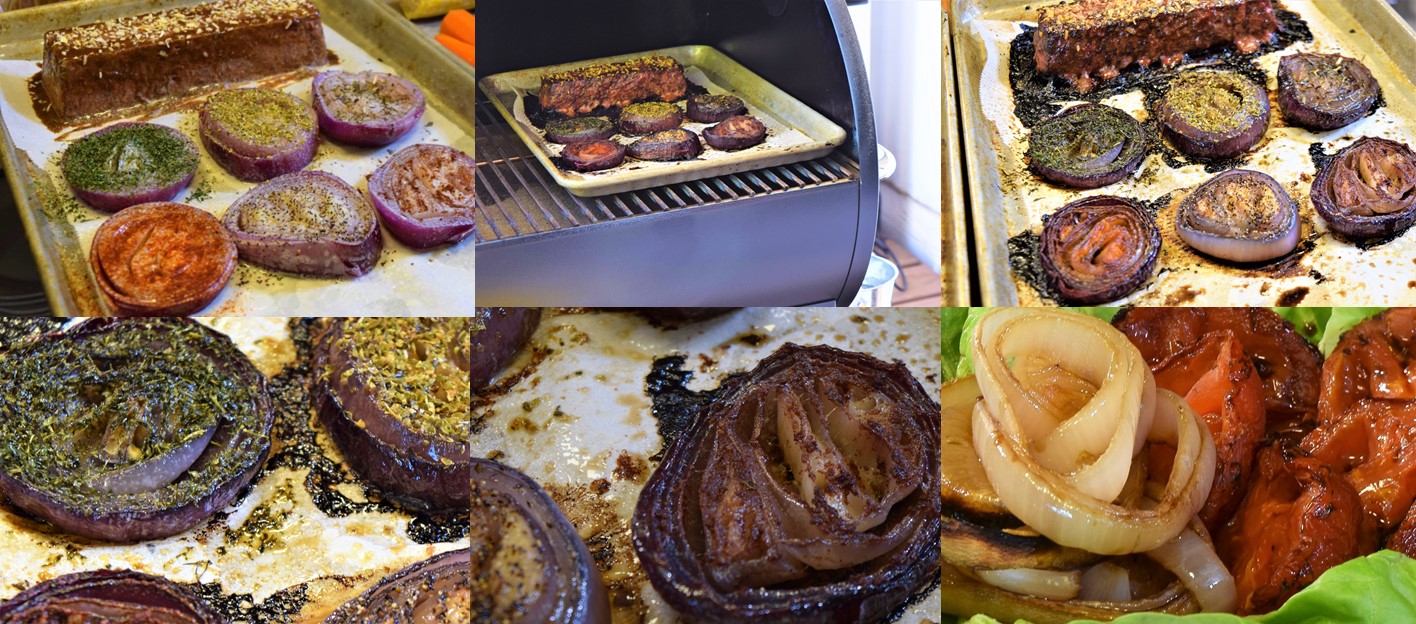Procedure:
Put the whole onions in either Ziploc Freezer bags or use a chamber vacuum. Both methods work equally well. Process via sous vide at
183 F/84 C for 2 hours.
Cold shock the bags in ice water to 70 F/21 C, and then refrigerate at 40 F/4 C. This is a very important step. Beyond preventing temperature contamination in your refrigerator, attempting to smoke the onions when they are hot will result in over cooking. You really want all foods to enter a smoker (or oven) as close to 40 F/4 C as possible.
Upon removing the onions from the bags, harvest the juice that remains in the bag. This clear jus can be added to soups and sauces for flavor. If you are simultaneously processing several batches of vegetables–carrots, corn, celery, etc. (not potatoes), you will find yourself with enough of this to make your efforts worthwhile. It can be used to replace water or stock in almost any recipe.
Peel the onions by slicing off the stem end. Leave the root end intact. It becomes your “handle” after you peel the outer layer of the onion. The peel comes off much easier than it would if the onion were raw, and, as I mentioned, NO TEARS. If you are in the process of making stock, the peel is a good addition. If not, I usually discard it.
Cut the onions into three uniform slices, regardless of the size of the onions themselves. You will find that it’s the easiest way to get them to come out right. Lay the onions flat on parchment. Sprinkle each slice lightly with salt and pepper and drizzle with a little bit of vegetable oil. I do not recommend olive oil for this procedure because the heat in the smoker will subdue the subtle flavor of the oil.
Sprinkle the onions with seasonings. I like to pick from several different colors, as well as flavors. Paprika, fennel seeds, chervil, oregano, lemon zest, even a little bit of the barbecue rub creates a fun appearance and flavor sensation. The processing removes all the “hotness” from the onions and magnifies the sweetness so I like to take advantage of that.
Once the onions are prepared like this they can be lightly covered and kept in the refrigerator for up to three days without degrading. This is useful when you are prepping days ahead for a particular event. On the day of service, simply transfer the sheet pan of onions to the smoker set to
400 F/204 C
At service, I like to use the Vegetable Marinade as a dip/dressing.
At this temperature, the onions will take about an hour. I have been using a PID controlled pellet grill.
Pellet grills are very fast heating so I load the smoker before I turn it on. This is a departure from basic smoker practice but it has the benefit of minimizing our exposure to the toxic gases created as a natural result of burning wood–carbon monoxide and nitric oxide. I found that the onions took about ten minutes more to achieve the same results as if I had preheated the smoker. This saves pellets and money!
Our sous vide/Sous-B-Q™ summer sausage is also linked on our sister site:
Click HERE for the recipe for Sous-B-Q Celery!






